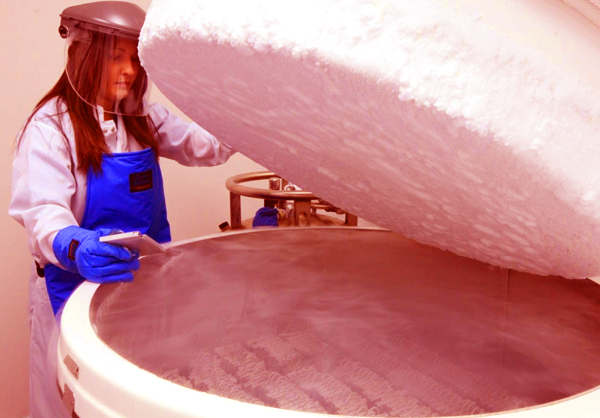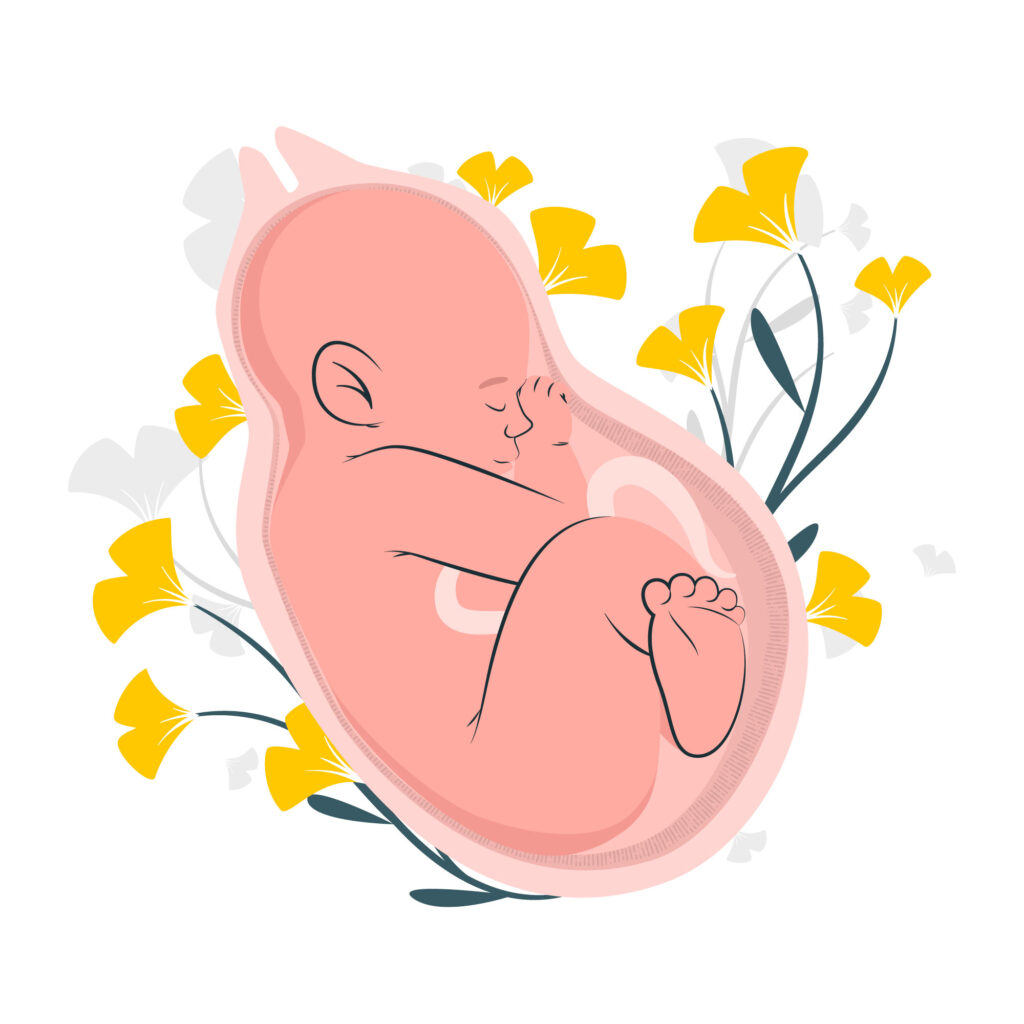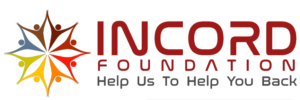About Incord
is essentially an Institute of Cord Cells and Research Development. A national-level non-profit organization registered under Section 8 of the Companies Act 2013 and also incorporated with 12A, 80G, Niti Ayog, and CSR Certifications. Main objective of Incord Foundation is Public Cord Blood Banking
Umbilical Cord Blood (UCB) is a pure and abundant source of stem cells that have the potential to save lives. Similar to water, everyone should have access to stem cells when needed for medical treatment or transplantation. And, when easily available, it lets people prioritize taking care of their loved ones rather than finding compatible donors during an emergency.
OUR VISION
We, at INCORD FOUNDATION, carry a Vision to preserve one crore cord cell unit repositories within the next five to eight years. INCORD aspires to be a ground for securing and saving lives.
OUR MISSION
Our Mission is to make matching stem cells available for all needy patients worldwide who suffer from chronic life-threatening diseases almost FREE OF COST.
Stem Cells
Stem cells are the body’s “master cells.” They are the building blocks of all organs, tissues, blood and the immune system. They function in numerous tissues as an internal repair system, regenerating to replace lost or damaged cells during the course of life. Stem Cells have the potential to develop into different specialized cell types to generate new growth and development. They serve as the foundation of the immune system of the body.

Cord Blood Banking
Cord blood banking means storing cord blood (and its valuable stem cells) for the future medical use. There are two types of cord blood banking: Public and Private. Here are the key differences between them.
Public Cord Blood Banking
are usually non-profit companies that store donated cord blood for free. There’s a greater chance that your cord blood will be used because it could be given to any child or adult in need.
Private Cord Blood Banking
are companies that require a registration fee and annual storage fees for your cord blood, but it’s saved specifically for your own family, so you’ll have ready access to it.
Bone Marrow Transplant
The stem cells used in Bone Marrow Transplant come from the liquid centre of the bone, know as marrow. In general, all three forms of BMTs (autologous, syngeneic, and allogeneic) go through the same “harvesting” process to collect bone marrow. Either the donor is given general anaesthesia, rendering the donor unconscious during the process, or regional anaesthesia, which results in a loss of sensation below the waist. To extract the bone’s marrow, needles are placed through the skin over the pelvic (hip) bone or, in exceptional circumstances, over the sternum (breastbone). The marrow harvesting process takes roughly an hour.<br>
Application Of Stem Cells In Medicine
In Today’s Modern World Stem Cells are used in the treatment of over
80+ critical medical conditions, Gradually Growing Day By Day
Currently Treatable Conditions
Today, cord blood stem cells are used in the treatment of more than 80 different medical conditions, including Anemia, Leukemia, and bone marrow cancers
Cord Blood Research
There are more than 300 clinical trials going on for regenerative therapies including Cerebral Palsy, Type 1 & 2 Diabetes, Heart Diseases, Neurological Diseases & Injuries etc...
Cord Tissue Research
Mesenchymal stem cells from cord tissue are used to generate growth factors that help with tissue repair and can develop into a neural cells, bone cells, fat cells, and cartilage.
Acute Myelofibrosis
Agnogenic Myeloid Metaplasia (Myelofibrosis)
Amyloidosis
Aplastic Anemia (Severe)
Beta Thalassemia Major
Blackfan-Diamond Anemia
Congenital Amegakaryocytic Thrombocytopenia (CAT)
Congenital Cytopenia
Congenital Dyserythropoietic Anemia
Dyskeratosis Congenita
Essential Thrombocythemia
Fanconi Anemia
Glanzmann’s Thrombasthenia
Myelodysplastic Syndrome
Paroxysmal Nocturnal Hemoglobinuria (PNH)
Polycythemia Vera
Pure Red Cell Aplasia
Refractory Anemia with Excess Blasts (RAEB)
Refractory Anemia with Excess Blasts in Transition
(RAEB-T)
Refractory Anemia with Ringed Sideroblasts (RARS)
Shwachman-Diamond Syndrome
Sickle Cell Disease
Acute Biphenotypic Leukemia
Acute Lymphocytic Leukemia (ALL)
Acute Myelogenous Leukemia (AML)
Acute Undifferentiated Leukemia
Adult T Cell Leukemia/Lymphoma
Chronic Active Epstein Barr
Chronic Lymphocytic Leukemia (CLL)
Chronic Myelogenous Leukemia (CML)
Ewing’s Sarcoma (Autologous)
Hodgkin’s Lymphoma (Autologous)
Juvenile Chronic Myelogenous Leukemia (JCML)
Juvenile Myelomonocytic Leukemia (JMML)
Myeloid/Natural Killer (NK) Cell PrecursorAcute Leukemia
Medulloblastoma (Autologous)
Non-Hodgkin’s Lymphoma
Prolymphocytic Leukemia
Plasma Cell Leukemia (Autologous)
Chronic Myelomonocytic Leukemia (CMML)
Leukocyte Adhesion Deficiency
Multiple Myeloma (Autologous)
Neuroblastoma (Autologous)
Rhabdomyosarcoma
Retinoblastoma (Autologous)
Thymoma (Thymic Carcinoma)
Waldenstrom’s Macroglobulinemia (Autologous)
Wilms Tumor
Adenosine Deaminase Deficiency (ADD)
Bare Lymphocyte Syndrome (BLS)
Chediak-Higashi Syndrome (CHS)
Chronic Granulomatous Disease
Congenital Neutropenia
DiGeorge Syndrome
Evans Syndrome
Fucosidosis
Hemophagocytic Lymphohistiocytosis (HLH)
Hemophagocytosis Langerhans’ Cell Histiocytosis
(Histiocytosis X)
IKK Gamma Deficiency (NEMO Deficiency)
Immune Dysregulation, Polyendocrinopathy, Enteropathy,
X-linked (IPEX) Syndrome
Kostmann Syndrome (SCID)
Myelokathexis
Omenn Syndrome (SCID)
Phosphorylase Deficiency(SCID)
Purine Nucleoside (SCID)
Reticular Dysgenesis (SCID)
Severe Combined Immunodeficiency Diseases (SCID)
Thymic Dysplasia
Wiskott-Aldrich Syndrome
X-linked Agammaglobulinemia
X-Linked Lymphoproliferative Disorder
X-Linked Hyper IgM Syndrome
Congenital Erythropoietic Porphyria (Gunther Disease)
Gaucher Disease
Hunter Syndrome (MPS-II)
Hurler Syndrome (MPS-IH)
Krabbe Disease
Lesch-Nyhan Syndrome
Mannosidosis
Maroteaux-Lamy Syndrome (MPS-VI)
Metachromatic Leukodystrophy
Mucolipidosis II (I-cell Disease)
Neuronal Ceroid Lipofuscinosis (Batten Disease)
Niemann-Pick Disease
Sandhoff Disease
Sanfilippo Syndrome (MPS-III)
Scheie Syndrome (MPS-IS)
Sly Syndrome (MPS-VII)
Tay Sachs
Wolman Disease
X-Linked Adrenoleukodystrophy
Autologous – For the medical conditions that extracts patient’s own stem cells for treatment.
Allogeneic – Rest of the medical conditions mentioned above use stem cells from donor for treatment.
Reference American Society for Blood and Marrow Transplantation (ASBMT) and Parents Guide to Cord Blood Foundation
First case of HIV cure in a woman after stem cell transplantation reported at WHO CROI-2022 – 24 March 2022
Reference – https://www.who.int/news/item/24-03-2022-first-case-of-hiv-cure-in-a-woman-after-stem-cell-transplantation-reported-at-croi-2022
Volunteers
“Volunteers do not necessarily have the time;
they have the heart”
According to the proverb “Alone we can do little; together we can do so much,” every volunteer who works with the Incord Foundation will have a significant impact on the success of our aim to secure and save lives.
Incord Foundation Needs YOU!
We’re On a Mission to Secure and Save Human Lives.
Please JOIN US!
Celebrate Giving,
Celebrate Happiness!
We appreciate your participation in our mission of securing and saving lives, we are working in five distinct phases, currently, we are in the 1st phase of infrastructure setup and we are seeking sponsors and charitable donations. Section 80G of the Income Tax Act entitles you to a 50% tax exemption on your donation. Your invoices and an 80G certificate will be delivered to you after you make your contribution.
We know that our efforts are nothing more than a drop in the ocean. But these little drops can form a big ocean. Every contribution will top-up great value and importance to our life saving mission.
Act Now and Gift A Life By Contributing
Frequently Asked Questions
No, cord blood donation has no bearing on how will deliver the baby. If mother gave birth via cesarean (C-section) or vaginal delivery, she could bank cord blood. The baby isn’t harmed in any way during cord blood collection because no blood is taken directly from them. However, if you’re donating cord blood, your healthcare provider needs to be informed weeks in advance.
Yes, there are limitations on who is eligible to give cord blood. A set of requirements provided by the Health Resources and Services Administration determines eligibility. You will have to provide details like your age, any existing medical issues, and much more. These responses are used by cord blood banks to decide whether to accept baby’s cord blood. Some of the concerns are:
o Is mother age older than 18?
o Are you having only one baby?
o The mother, baby’s father, or baby’s sibling(s) has had any kind of cancer?
o Does your baby have any congenital disorders that you’re aware of?
o In the last 12 months, have you had tattoos or piercings where shared or non-sterile inks, needles or instruments were used?
o In the last 12 months, have you needed blood cell or transfusion support?
o Have you been exposed to hepatitis B or hepatitis C, human immunodeficiency virus (HIV) or tuberculosis?
o Have you used a needle to take a drug not prescribed by a physician in the last 12 months?
o Have you had chemotherapy?
It is your personal decision to store your baby’s cord blood. You may decide the expense of storing your baby’s cord blood in a private bank makes sense for your family. Or you can decide that using cord blood banking is a great way to pay it forward and help other. In any case, the best course of action is up to you and your family.
Anyone who needs stem cells, including a family member can benefit from cord blood banking. The baby’s cord blood contains stem cells that carry the potential to treat numerous life-threatening diseases, including cancer. Deciding on what to do with your baby’s cord blood is your own personal choice.
Keep in mind that umbilical cord blood that isn’t stored or donated gets thrown away.
Umbilical Cord Blood banks (UCB) are permitted only under license and monitoring by the Central Drug Standards Controlling Organization (CDSCO). The Cord Blood Banks have to comply with the Drugs and Cosmetics (3rd Amendment) Rules, Gazette Notification No. GSR 899(E) dated 27/12/2011 for collection, processing, testing, storage, banking, and release of stored units.
https://main.icmr.nic.in/sites/default/files/upload_documents/UCBB_eng.pdf


